





Meatless diet
The meatless diet intended for weight loss at the excess weight and clarifications of an organism consists in an exception of a diet of meat and meat products, and also their replacement with soy products.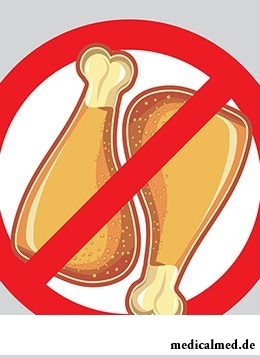
Features of a meatless diet
At observance of a meatless diet it is necessary to refuse completely for 10-14 days the use of meat, meat products and semi-finished products. In order that the organism had no sharp deficiency of protein, calcium and zinc, it is necessary to pass gradually to a diet and to include in a diet alternative products with useful substances.
Useful products in such diet are soy, soy sauce and soy meat, and also dairy products, fish and eggs. Soy sauce at a diet can be added to various dishes and to fill with it salads. Also vegetables, almonds, bean cultures, white loaf, spinach and broccoli will fill a stock of important microelements and vitamins.
In the period of a meatless diet it is necessary to refuse caloric dishes and to replace them with soy products. Soy does not cause allergic reactions, has a neutral smell and pleasant taste.
The soy diet is based on soy products which do not contain cholesterol and lactose, are well acquired and remove intoxication symptoms. The regular use of soy meat and soy sauce at a diet will allow to reduce risk of development of oncological diseases, weak-mindednesses, pathologies of bone tissues and diseases of cardiovascular system.
The advantage and efficiency of a soy diet is caused by existence in a plant of lecithin which regulates lipidic exchange, promotes a zhiroszhiganiye and normalizes metabolism process.
Caloric content of soy and soy meat
Soy is a preferable product for the dietary and vegetarian menu as supports squirrels of a plant origin. Phosphorus, calcium, iron, sodium, magnesium, potassium, vitamins A, E and B, and also useful fatty acids are a part of soy meat.
Caloric content of soy makes 381 kcal, and also in its structure of 17 g of fats, 34 g of proteins and 17,2 g of carbohydrates.
Soy meat is a product from soy with the phytalbumin made of soy flour. This meat is suitable for vegetarian food and the dietary menu. Caloric content of soy meat makes 296 kcal, and also it contains 52 g of proteins, 2 g of fats and 17 g of carbohydrates.
From the average caloric content of soy meat it is possible to cook dietary soups, and also various dishes with vegetables, pasta and grain.
Advantages of a meatless diet
The meatless diet consisting of soy products, vegetables and fruit it is necessary to observe no more than 15 days that the organism did not get a stress and did not reach exhaustion. During a soy diet it is necessary to eat not less than 3 - 4 times a day, to have a bite 2-3 times and to use daily not less than 1,5 liters of liquid.
Such diet well is suitable for the people doing active sports, dances, and also observing healthy nutrition. The soy diet helps to eliminate extra kilos, promotes removal from an organism of harmful substances, strengthens the musculoskeletal device and stabilizes psychoemotional a state.
Before transition to a meatless diet it is necessary to consult with the attending physician and to undergo diagnostic inspection.
This diet has both advantages, and shortcomings. It is possible to carry to the main advantages of a meatless diet:
- simplicity of drawing up the weekly menu and availability of products in its structure;
- prevention of various diseases (diabetes mellitus, atherosclerosis, oncological diseases, hypertension);
- effective weight loss without organism exhaustion;
- improvement of a condition of skin and hair;
- increase in elasticity of muscles and strengthening of bones.
It is necessary to consider that the meatless diet is contraindicated at anemia, hypotonia, exhaustion, diseases of a brain and mental disorders, and also at children's age up to 16 years.
In Great Britain there is a law according to which the surgeon can refuse to do to the patient operation if he smokes or has excess weight. The person has to refuse addictions, and then, perhaps, he will not need an operative measure.

White teeth and the Hollywood smile – a dream of many people. Long time was considered that a plaque on teeth and change of their color – destiny of those...
Section: Articles about health
Cold, puffiness of a nose, itch, the watering eyes - characteristic symptoms of the allergic rhinitis resulting from hit of allergens (pollen, house dust, hair of animals, etc.) on a mucous membrane of a nose. Unpleasant feelings often deliver беспоко...
Section: Articles about health
Nightmares belong to the most unpleasant frustration. Statistically, they happen at 4% of adults, and almost at 70% of children and teenagers. During a nightmare of people dreams himself in extremely difficult, life-threatening situation. He wakens suddenly, in a condition of a fright, and, as a rule, remembers the dream distinctly. The feeling of depression and alarm does not release throughout the day, creating hindrances for work and normal communication. If such episodes repeat often, can р...
Section: Articles about health
Heart disease and blood vessels lead to disturbance of blood supply of bodies and fabrics that involves failures in their works...
Section: Articles about health
Antibiotics - - it is possible to call the chemical compounds suppressing growth of bacteria the break in the field of medicine which allowed to save mankind from many diseases incurable earlier: tuberculosis, plague, syphilis and many others. A contribution of drugs to rescue of people from...
Section: Articles about health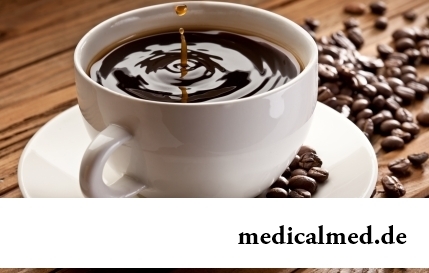
Coffee – favourite drink of many. For the last decades it more than once already declared very harmful, extremely useful and even necessary for normal life activity. In spite of the fact that this product became for us usual for a long time, there are many myths about properties of coffee and its impact on a human body. Readers can get acquainted with the most widespread of similar delusions today....
Section: Articles about health
All parents are ready to what the baby often and pisat much. Since then, as the absorbing diapers strongly became current...
Section: Articles about health
Urogenital candidiasis (milkwoman) – a fungal infection which annoys unpleasant feelings in the field of generative organs, being followed by white curdled allocations, an itch, discomfort during an urination, pain. She is called by Candida fungus – a mustache...
Section: Articles about health
It is difficult to revaluate importance of kidneys for an organism. These bodies not only perform work on purification of blood of decomposition products and removal of excess liquid. They are responsible also for production of some hormones necessary for maintenance of a normality of a bone tissue, and also for a producing red blood cells – erythrocytes....
Section: Articles about health
Any of us is not insured from a heavy illness of the loved one. Happens and so that someone from family members becomes lying бо...
Section: Articles about health
Reactive pancreatitis - the disease which is characterized by inflammatory process in a pancreas which arises most often because of excess activity of digestive enzymes. It − the emergency state which treatment has to take place in хирургич...
Section: Articles about health
An eye of the person daily experiences considerable strain. The problem of preservation of sight is for many years directly connected with a question of supply of tissues of eye enough oxygen and nutrients. This task is carried out by small vessels – capillaries. For normal functioning of the visual device extremely important that they kept the integrity, but it works well not always. Microtraumas of eye vessels during which there are small hemorrhages it is extraordinary расп...
Section: Articles about health
Impossibility to conceive the child – a trouble of many Russian families. During quite long time was considered that the main "culprits...
Section: Articles about health
Life activity of one-celled fungi of the sort Candida, related to yeast is a proximate cause of development of candidiasis (milkwoman). Normal these microorganisms are a part of the microflora living in an oral cavity and intestines of most of people, and that...
Section: Articles about health
The stroke is one of the most widespread diseases of the person, annually in the world about 6 million cases of this pathology are registered. According to medical statistics, strokes occur almost three times more often than myocardial infarctions. The disease belongs to heavy, and has an unfavourable result: the lethality reaches 40% among women and 25% among men. A considerable part of the patients who endured a stroke cannot be recovered completely. We suggest readers to examine...
Section: Articles about health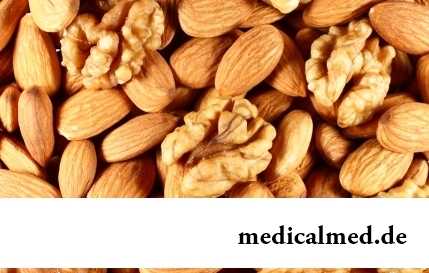
For the last decades the diabetes mellitus of the second type became really world problem. Number of cases annually cart...
Section: Articles about health
Some people consider what for medicine of the 21st century of secrets in the field of health of the person almost does not exist. It absolutely not so. The more answers scientists receive, the more the most difficult questions are raised for them by life. Besides, there are diseases, not объясн in any way...
Section: Articles about health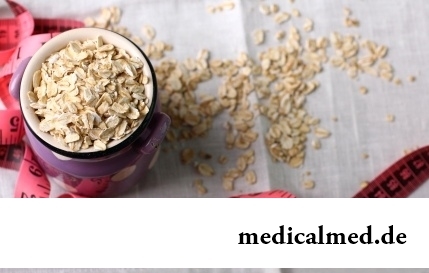
The list of stereotypes of which, apparently, all know strongly includes following: British surely eat porridge for breakfast. Perhaps, not all modern residents of Britain arrive quite so, but for those from them which continue to follow this tradition, it is possible to be glad sincerely: oat flakes are a product which regular use not only helps the person to keep force and beauty long. Porridge in a special way influences an organism, protecting it from seriousness...
Section: Articles about health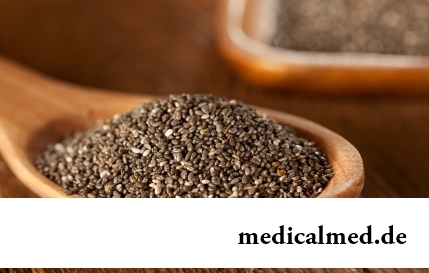
The chia plant, or the Spanish sage, is from South America. The indigenous people of the continent since ancient times used in food it семена:...
Section: Articles about health
Dietary supplements (dietary supplements) for the last decades were so thoroughly included into our life that, apparently, it is already impossible to find the person who at least once did not try them. At the same time, most of our compatriots have a vague idea about...
Section: Articles about health
It is pleasant to state a possibility of improvement of quality of life of people with problems of functioning of secretory system. Efforts of talented inventors created products which will be able to provide normal life activity of clients with moderate degree of a disease, it is essential to facilitate the help to patients with strongly expressed disturbances....
Section: Articles about health
Weakness of an ankle joint – very widespread problem. Its existence is demonstrated by tendency to a podvorachivaniye of legs п...
Section: Articles about health
Sooner or later hair turn gray at all. Many people try to hide these changes, returning natural color of the hair by means of coloring, or considerably changing it for the purpose of creation of absolutely new image. All know that the gray hair is a sign приближающ...
Section: Articles about health
It would seem, to buy drugs in Moscow does not make a problem – a drugstore, and not one, is available for each resident of the capital within walking distance. And, nevertheless, Internet drugstores become more popular – what it is possible to explain such phenomenon with? Actually there is a lot of reasons and if to formulate them it is short, then the most suitable word will be - "conveniently". We suggest to get acquainted in more detail with pluses and minuses of online drugstores that buying drugs, not to make the wrong choice....
Section: Articles about health
You heard that laughter prolongs life? To establish longevity direct link with sincere fun to researchers yet not удалос...
Section: Articles about health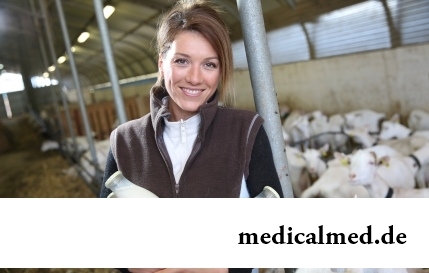
A little more than a century ago goat milk was a traditional food stuff of most of Russians. Unfortunately, today on tables of our compatriots it appears extremely seldom. The reason that the use of so useful product practically descended on...
Section: Articles about health
Olive oil – the product capable to make a powerful contribution to health of the person if it includes it in the diet. The rich vitamin composition of oil does it by a product number one from many diseases including from deadly. Only two tablespoons of oil from olives in day prevent emergence of diseases of vessels and heart, cancer, problems with digestion, presenilation, a depression and many other illnesses which treatment would demand a lot of time and forces. Let's consider on...
Section: Articles about health
